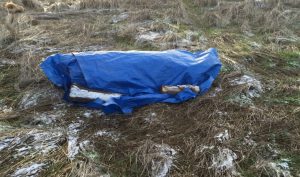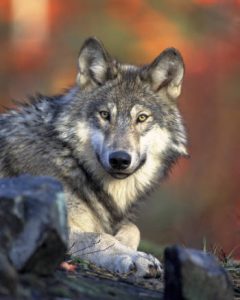Tracy Schohr, UCCE Livestock and Natural Resources Advisor, Plumas, Sierra, and Butte Counties
This blog post was adapted from the UCCE Plumas, Sierra, and Butte Counties Newsletter – December 2017
In California, livestock depredation is a growing concern across rural counties with mountain lions, bears, coyotes, and now wolves in the landscape. When you encounter a suspected livestock kill at your home ranch, leased pasture, or public allotment, it is important to take critical steps to preserve the site so a formal investigation can take place.
- If you suspect predation, because you’ve seen signs of a recent predator, call:
- For questions on wolves and wolf predation – Kent Laudon, CDFW at 530-215-0751
- Wildlife Services State Office (916) 979-2675
- Local Wildlife Services (District Supervisors)
- North District – Jim Shuler (530) 336-5623
- Sacramento District – Ryan McCreary (619) 666-6418
- Central District – Brian Popper (209) 579-2891
- San Luis District – Eric Covington (661) 765-2511
- South District – John Turman (619) 561-3752
- If you can’t get a hold of the above contacts, then try:
- Local Game Warden – Game Warden Dispatch 916-358-1312
- CDFW Regional Offices
- Northern Region (530) 225-2300 / Field Office (707) 445-6493
- N. Central Region (916)-358-2900
- Bay Delta Region (707) 944-5500
- Central Region (559) 243-4005 ext. 151
- South Coast Region (858) 467-4201
- Inland Deserts Region (909) 484-0167
-

Photo credit: USDA APHIS Wildlife Services
If you don’t immediately suspect predation, when initially inspecting the site, follow the below steps:
- Minimize your own impacts. Watch where you step and do not step on any signs (e.g. tracks). The fewer steps you make the better.
- If you happen to discover tracks while initially inspecting the carcass, cover them with a can, pot, etc. to protect them.
- Take a picture of carcass and surrounding areas.
- Mark location with camera picture, flagging, or GPS – this can be helpful for investigators to find the site.
- Protect the scene by restricting people, dogs, and
- livestock from disturbing evidence.
- The carcass should be protected by covering with a tarp to avoid further feeding on the carcass.
- Officially report incident to the Department of Fish and Wildlife via the Wildlife Incident Reporting System.
- This will provide a formal record of the incident. Such reports may result in the issuance of a depredation permit (permit to take animals creating property damage) for designated species requiring a depredation permit by California Codes and Regulations (this does NOT include wolves).
It is imperative to contact CA Department of Fish and Wildlife and USDA Wildlife Services to investigate potential livestock depredations. Depending on schedules, representatives from one or both agencies may conduct the investigation. During their visit, investigators will search the carcass site and surrounding area for predator sign, including tracks, hair, and scat. Therefore, it is important to preserve the site with the steps listed above. The investigators will closely examine the carcass for injuries, bite marks, and tissue damage patterns. Upon completion of the investigation, a “Livestock Loss Determination” report.
Following an investigation that has confirmed a livestock loss from a mountain lion, the California Department of Fish and Wildlife shall issue (depredation) permits when requested by ranchers. For more information on mountain lion depredation, click here.
If a bear has been found to cause livestock depredation, the California Department of Fish and Wildlife can issue a depredation permit outside of the bear hunting season. Furthermore, Section 4181.1 of the Fish and Game Code states; “that any bear that is encountered while in the act of inflicting injury to, molesting, or killing, livestock may be taken immediately by the owner of the livestock or the owner’s employee if the taking is reported no later than the next working day to the department and the carcass is made available to the department.” For more information on Black Bear depredation, click here.

Photo credit: Gary Kramer, USFWS
If wolves are present, ranchers can non-injuriously haze wolves near livestock. “Non-injurious harassment is allowed when wolves are within 0.25 mile of livestock, or within 100 yards of a dwelling, agricultural structure, campsite, or commercial facility.1”Additionally, there are non-lethal deterrents that may work in certain circumstance to prevent further depredations of livestock by wolves. At this time, there is no compensation for ranchers who experience livestock loss from a wolf in California. Reporting losses from wolves will help document impacts. For additional information, including tools to discourage wolf presence and legal protections, click here.
References:
Tools for California Livestock Producers to Discourage Wolf Presence, Guidance for Suspected Wolf Depredation, and Wolf Legal Status. California Department of Fish and Wildlife – June 2017.
